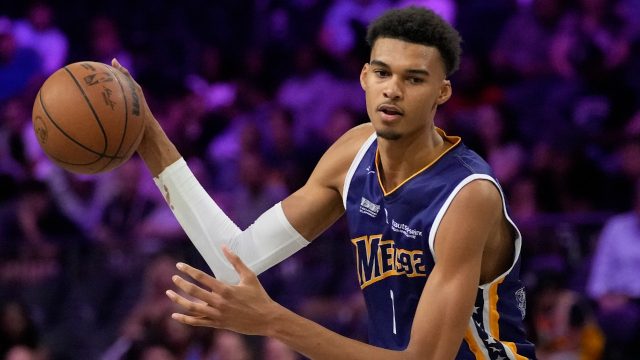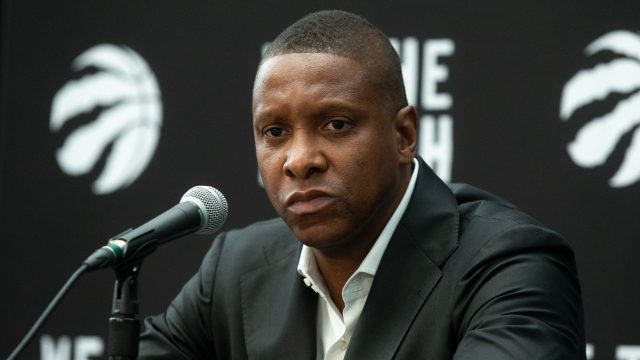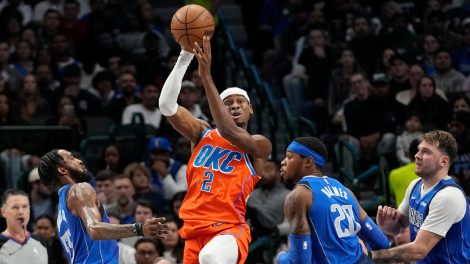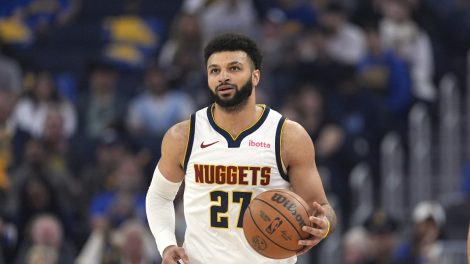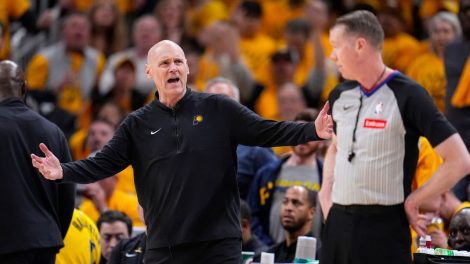Who says situational tanking doesn’t work in the NBA?
Well, Toronto Raptors president Masai Ujiri for one. Or at least he did this season when he decided that it was play-in or bust at the trade deadline. The Raptors reached that low bar but didn’t like it enough and decided to fire head coach Nick Nurse to try and change the flavour on a season that ended up leaving a sour taste in almost everyone’s mouth.
Whether pushing for the play-in compared with choosing to emphasize the draft lottery was the right move will be better understood in years to come. But on the night of the NBA’s draft lottery?
Finishing ninth in the Eastern Conference and selecting 13th overall in June doesn’t exactly offer a short-term dopamine hit.
Now the San Antonio Spurs? That’s the good stuff. They have this tanking thing figured out.
In 1986-87, the San Antonio Spurs made the playoffs in nine of the previous 10 seasons with middling results, then finally hit the wall and finished with the fourth-worst record in the league before jumping up three spots in the draft lottery to get the No. 1 overall pick.
Their reward was David Robinson, an agile seven-footer who had dominated college basketball that season playing for the U.S. Naval Academy. The catch was he had to complete two years of service following graduation, but the Spurs picked him anyway. He made his NBA debut in 1989 and was inducted into the Hall-of-Fame 20 years later as one of the best players in league history.
In 1996-97, Robinson missed all but six games with a back injury and the Spurs’ playoff chances were shot. San Antonio didn’t fight it. They went from a 59-win team in 1995-96 to a 60-loss team while Robinson was out. The Spurs jumped two spots in the draft lottery and picked Tim Duncan, who helped lead them to five NBA championships and sparked what ended up being a record 22-consecutive playoff appearances. He’s in the Hall of Fame and considered one of the top-10 players in NBA history.
Three times lucky, I guess.
On Tuesday night the Spurs won the most highly anticipated draft lottery since 2003 when LeBron James was taken first overall by the Cleveland Cavaliers. Barring something cataclysmic, the Spurs – who tanked in earnest this year after losing in the play-in tournament the past two seasons – will select seven-foot-four French teenager Victor Wembanyama, who has been projected as the best prospect coming into the league since James or Duncan before him.
Some are calling him the best prospect in NBA history. Some are suggesting he’s the best draft prospect in the history of team sports. OK, that’s all ESPN, but people are justifiably excited.
The hyperbole knows no bounds, but there seems to be little doubt that as long as Wembanyama’s wiry frame holds up – no sure thing given there’s never been a player seven-foot-four or taller play more than 900 career games – he’ll instantly alter the Spurs fortunes and perhaps the NBA’s as well.
His potential was enough of a magnet that no fewer than five teams started this past season with the primary goal of putting themselves in a position to draft him, with more teams trying to get in on the action as the year went along.
The NBA has taken significant steps to curb tanking in recent years, both by incentivizing weaker teams to keep pushing forward with the introduction of the play-in tournament, which effectively has extended the ‘post-season’ to 10 teams from eight since the 2020-21 season. As well, since 2018-19 they’ve flattened the lottery odds so that the teams with the three worst records each have a 14 per cent chance of drafting first overall (though they can fall to no worse than fifth).
But even in a league that probably has more parity than it has in decades, elite individual talent remains the ultimate difference maker. And while there’s always a chance that you can find a two-time MVP with the 41st pick of the second round as the Western Conference Finalist Denver Nuggets did with Nikola Jokic in 2014, the higher you pick the better the player is the most common outcome. It’s why teams tank.
Will Wembanyama cause history to repeat itself in San Antonio where Duncan led them to a championship in his second season?
There are probably too many variables involved to make that call.
Will Wembanyama’s body – an athlete’s greatest asset and ultimate liability — allow it? Will his mindset remain serious and focused on the task, even as his fame and wealth accrue to unimaginable levels, with scrutiny and expectations blowing up proportionately? Will the Spurs fulfill their obligations and consistently make the right choices regarding his development, his coaching, and the teammates he gets paired with?
We won’t know for years to come, but San Antonio has got this right at least twice before.
Now the rest of the lottery teams are left hoping that they can find quality that can change their teams. At the top of the draft, there’s enthusiasm for the likes of Scoot Henderson, Brandon Miller and the Thompson twins. After that dreams shift to finding a difference maker the way Golden State Warriors did with Steph Curry and the seventh pick in 2009, or the Milwaukee Bucks did with Giannis Antetokounmpo in 2013.
The Toronto Raptors certainly have to think that way. They have little other choice.
They executed the ‘Tampa Tank’ in 2020-21 and were rewarded when they moved from seventh-best odds to fourth overall and selected 2022 NBA rookie-of-the-year Scottie Barnes. But since then they’ve been trying to make a competitive team out of a collection of seemingly ill-fitting parts.
Ironically the Raptors have played a significant role in the Spurs’ rebuilding efforts reflecting two franchises with different priorities.
At the trade deadline in 2022 Toronto effectively traded down 13 spots in the draft in order to acquire veteran Thaddeus Young. That move cost the Raptors the chance to draft all-rookie centre Walker Kessler with what would have been the 20th overall pick. Kessler eventually was taken 22nd overall by Utah; Toronto took defensive-minded centre Christian Koloko with the 33rd pick.
This past season the Raptors traded a protected 2024 first-round pick and second-round picks in 2023, 2024 and 2025 to San Antonio for Jakob Poeltl. At the time of the deal, Toronto’s record was 26-30. In comparison, the Portland Trail Blazers were 27-28. The Raptors – sparked by Poeltl – finished the season well but ended up losing the 9-10 play-in game to Chicago. The Blazers pulled the chute on theirs, and Tuesday night had the fifth-best odds to pick first and ended up moving up to third overall in a draft that is considered top-heavy in elite prospects, but hollowing out quickly after that.
Chances are Portland will get a better player picking No. 3 than the Raptors – who had a one per cent chance at picking first and a 4.7 per cent chance of picking in the top four but didn’t budge off the 13th position. Even if the Raptors are doubtless confident that their scouting department will find them a mid-round gem and the addition of Poeltl was too good of an opportunity to pass up, there is a very distinct possibility that they will be swimming upstream, trying to build a winning team without the kinds of stars that are normally taken with the top handful of picks in the draft.
It’s a problem the San Antonio Spurs haven’t had to worry about since the late 1980s and won’t have to worry about now.




